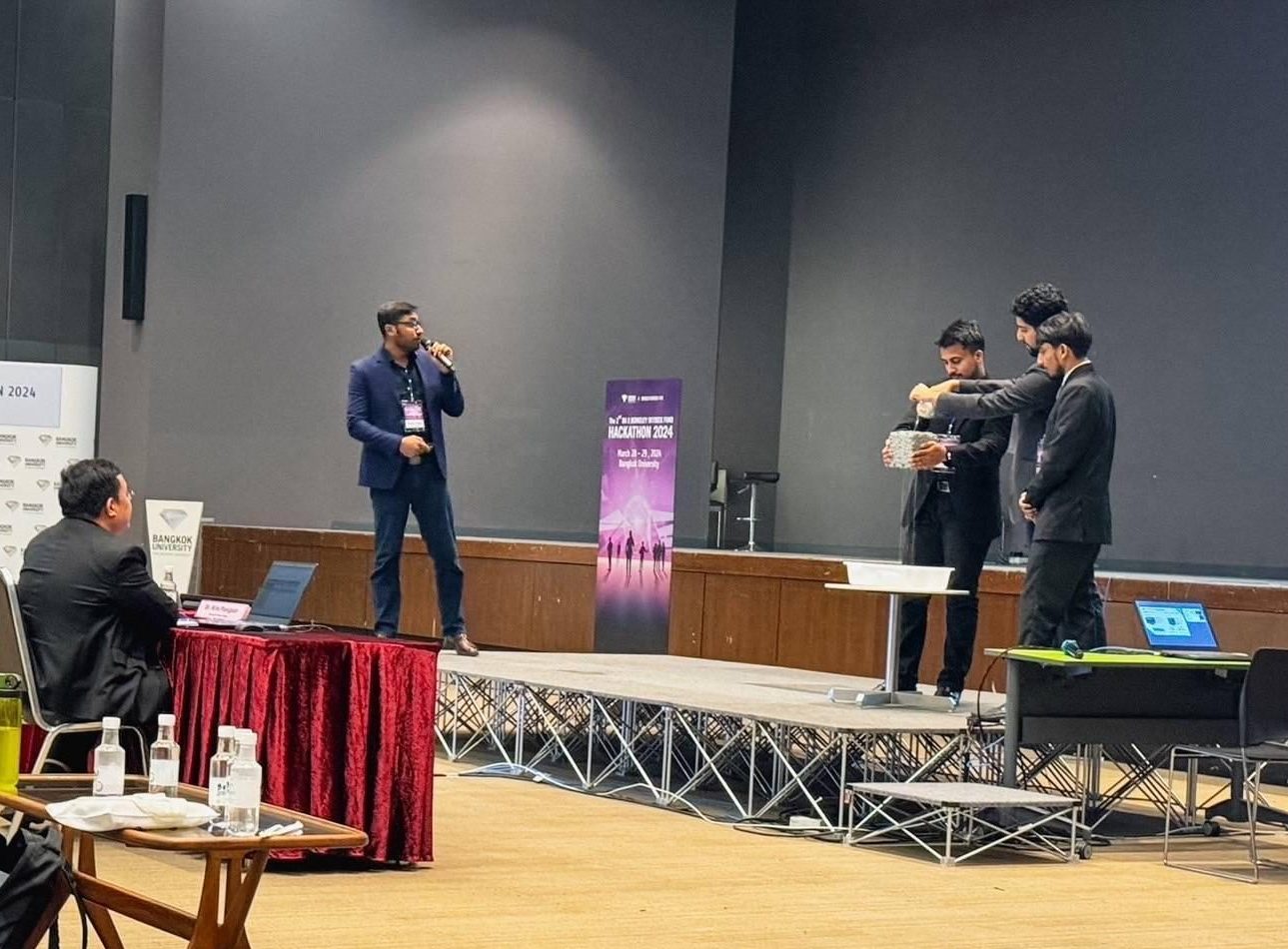The article can be read at this link: http://issuu.com/mangomangomedia/docs/bt_feb2013/18
The article is also reproduced here:
Idea
By Ridwan Quaium
The World Resource Institute (WRI) estimates that Bangkok loses about
US$250 million each year due to wasted time in traffic congestion, as
the average vehicle speed during peak hours in Bangkok is only about 12
km/h. Despite this, the vehicle growth in the country is 6%, which is
quite high. So is there any solution to this notorious traffic in
Bangkok? We might find the answer if we briefly re¬visit the history of
Bangkok.
Bangkok at its inception as the capital of Siam in 1782 was a
water-based city with floating houses and houses on stilts forming a
canal-based ur¬ban form based on the banks of the Chao Phraya River.
The rivers and the canals in the city served both as distribution and
communication routes, as trade and investment was done mainly within
the canals. These canals were both natural and artificial. The
artificial canals were dug in 1522, dur¬ing the reign of King
Chairachathirat of Ayutthaya, to shorten the distances that foreign
merchants had to travel to get to their desired destinations in the
city. The water-based developments and the intricate network of canals
helped Bangkok to earn the title of the ‘Venice of the East’.
The influence of European colonial power in the 1850s encouraged the
shift of the water-based developments and activities to land, which
per¬manently transformed the urban fabric of Bangkok. Many canals were
filled in to facilitate this change, and the ‘Venice of the East’
moniker started to lose its significance. Due to its poor service and
poor con¬nections with other land transports, only a small fraction of
the daily commuters use the remaining canals, or ‘khlongs’, for their
journey to and from work. The dependency on vehicular transportation
has turned Bangkok into one of the most traffic-congested cities in the
world. Rapid and unplanned growth of the city; an inadequate capacity
of the road¬ways; a poor and slowly developing public transit system;
and a general lack of management, analysis, and planning of
transportation can be blamed for the notorious traffic congestion in
the city.
Bangkok to this date has a relatively diverse public transport system
comprised of an overhead mass transit system, the underground rapid
transit, the Airport Rail Link, as well as a bus rapid transit (BRT)
system. In addition, Bangkok announced plans to construct a
50-kilometer-long covered, elevated skywalk (the ‘Super Skywalk
System’). However, the is¬sue is that these mass transit systems have
the capacity to serve only a small portion of the city. This is why
traffic congestion in the streets of Bangkok still remains and would
continue to do so.
Expanding the rail and bus rapid transit is a better option to tackle
traffic congestion than building highways, but building the
infrastructure for rail transits requires a huge amount of financial
and time investment. The urban fabric of Bangkok is so dispersed and
sprawled that the ‘Super Skywalk’ may hardly play any role in reducing
the traffic congestion in the city. A cost ef¬fective approach to deal
with the traffic congestion in Bangkok could very well be the khlong
boat transportation. Although a fair amount of passen¬gers commute
using the ferries and express boats along the Chao Phraya River, not
many commute using the khlong boat service. The Chao Phraya boat
service may not help in reducing the traffic congestion in inner
Bang¬kok, as it is mainly for transporting people along or across the
river. For com¬muting within Bangkok, the khlong boat service is
needed. Currently, there are only two fixed khlong routes in Bangkok
that serve as transportation.
When people think of Venice, they envision boats being rowed along
ca¬nals lined with exotic cafés and restaurants alongside. If it can be
done so nicely in Venice, and if it could be done in Bangkok three
hundred years ago, there is no reason why it could not be done again
here in Bangkok. Although only used for tourism, the canal boat service
in the River Walk in San Antonio, Texas, in the U.S., is a good example
that Bangkok may use to revitalize the khlong boat service to revive
the title of the ‘Venice of the East’. Dinner cruises on the Chao
Phraya River and floating markets are very popular tourist activities
in Thailand. This means that boats remain a part of the rich heritage
of Thailand. The city has to utilize this positive image of boats to
enhance the khlong boat service.
To expand the network of the khlong boat service, some initiatives can
be taken. The routes on which the khlong boats used to run before
(10-15 years ago) could be revived. The canals would need to be
expanded and maintained properly by dredging and restoring the quality
of the water in the khlongs. The piers needs to be made safer and more
passenger friendly for waiting and embarking/disembarking. The piers,
as well as the canal cor¬ridor, should be given an overall makeover
through landscape architecture. Currently, cafés and restaurants exist
along some of the piers, but these could be extended throughout the
entire length of the canals to enhance the social and economic activity
and vibrancy of the canals and the city. The existing boats could be
replaced with more energy-efficient, modern boats that offer more
comfort to the riders. The boats should be equipped with adequate
safety kits. Connectivity of the khlong boat network to other public
transit in Bangkok should be enhanced. The supervising authority needs
to market and promote the service through print, electronic, and
so¬cial media to attract passengers.
There are many reasons why it is important to revive the ‘Venice of
the East’ by improving the khlong boat service. It is the most
cost-effective public transport system, as it does not require any
expensive infrastructure like the BTS or MRT systems do. The basic
infrastructure to run the service, the canals themselves, is already
there. Since it runs through the city, it will pro¬vide an excellent
alternative to the city commuters. If marketed properly, it has the
potential to carry a large number of commuters. This will some¬what
reduce the traffic congestion and air pollution. Dredging the canals
and extending the network of the canals will provide extra space to
store floodwaters during the rainy season. The khlong boat service will
create many green jobs and enhance the businesses along the canals. The
cafés and restaurants will serve as public spaces for the residents and
tourists to socialize. Furthermore, khlong boats were the major mode of
transporta¬tion in Bangkok around three hundred years ago. Thus,
reviving the service will bring back the rich tradition and heritage of
Thailand.
Overall, it will enhance the livability of the city. It’s an idea
worth floating for consideration.







